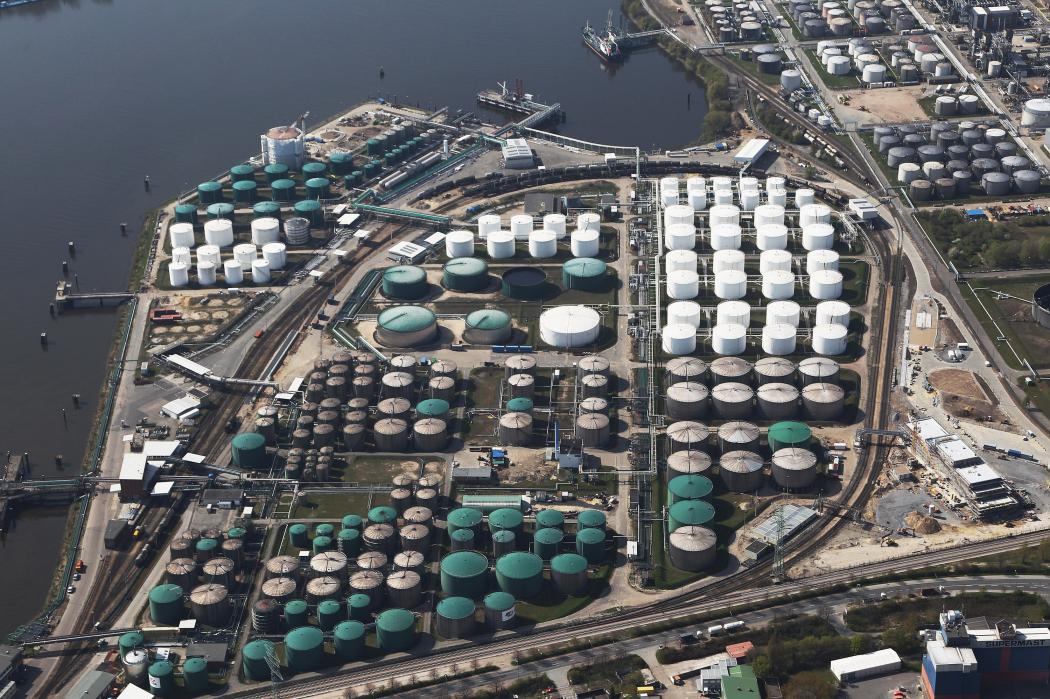Iran's proven crude oil and natural gas reserves experienced a considerable growth following discoveries in the last two years, managing director of National Iranian Oil Company said on Sunday.
"The oil minister will officially unveil the precise amount of commercially recoverable hydrocarbon reserves by the end of the current Iranian year (started March 21)," Rokneddin Javadi was quoted as saying by Mehr News Agency.
The official added that two years ago, Iran's proven crude oil reserves stood at 158 billion barrels.
Iran's proven natural gas reserves are estimated to be 33 trillion cubic meters, making it the world’s biggest natural gas reserve. It holds the fourth-largest proven crude oil reserves.
"Iran holds 17% of the world's proven natural gas reserves and more than one-third of OPEC's reserves. Iran's largest natural gas field, South Pars in the south, is estimated to hold roughly 40% of Iran's gas reserves," he said.
According to Javadi, the exact details of proven hydrocarbon reserves are being prepared and it will be much more than what many experts had predicted.
"The recent discoveries will definitely increase Iran's global ranking in hydrocarbon reserves," he said.
"Currently, Iran is ranked fourth with respect to its recoverable oil and gas reserves after Venezuela, Saudi Arabia and Canada."
Largest Gas Reserve
The US Energy Information Administration estimated Iran's proven gas reserves as of the start of 2013 as 33.6 trillion cubic meters, rendering it first in the world, surpassing Russia's.
Iran is one of the most hydrocarbon-rich areas in the world. Since the nation's first oil well discovery in 1908, 145 hydrocarbon fields and 297 oil and gas reservoirs have been discovered in Iran, with many fields having multiple pay zones.
A total of 102 fields are oil and the remaining 43 are gas, and there are 205 oil reservoirs and 92 natural gas reservoirs.
According to Iran's Energy Balance Sheet, 78 of these fields are currently active, with 62 onshore and 16 offshore, leaving 67 fields inactive at present. Some 23 hydrocarbon fields lie in border areas and are shared with adjacent countries, including Kuwait, Iraq, Qatar, Bahrain, UAE, Saudi Arabia and Turkmenistan. A lack of modern technology and budget has hampered development of fields, allowing neighbors to draw the lion's share of underground reserves. The country is also lagging behind Qatar in terms of extraction from the South Pars gas field in the Persian Gulf, with the tiny Arab neighbor reportedly drawing 1.6 times faster from the joint field.
Based on statistics issued by the UK-based energy giant, British Petroleum, total world proven oil reserves reached 1700.1 billion barrels at the end of 2014 sufficient to continue production for 52.5 years.
While the largest additions to reserves increased 1.1 billion barrels for Saudi Arabia, the largest decline came from Russia, where reserves fell by 1.9 billion barrels.
OPEC countries continue to hold a majority of the world’s reserves, accounting for 71.6% of the global total. Over the past decade, global proven reserves have increased by 24%, or over 330 billion barrels.
The world's total proven natural gas reserves at end-2014 stood at 187.1 trillion cubic meters, sufficient to meet 54.1 years of global production. Total proven reserves grew by 0.3% relative to end-2013.


